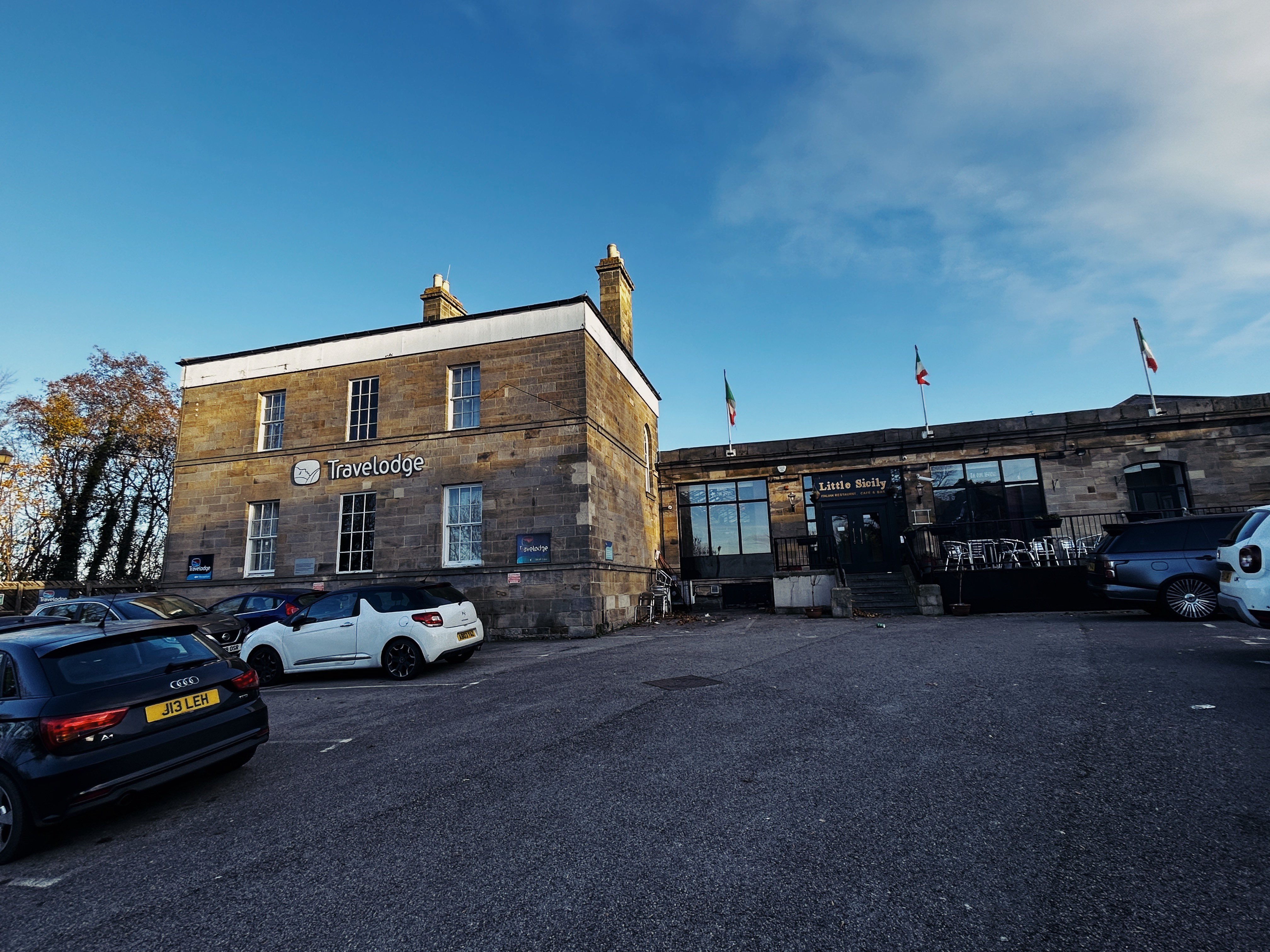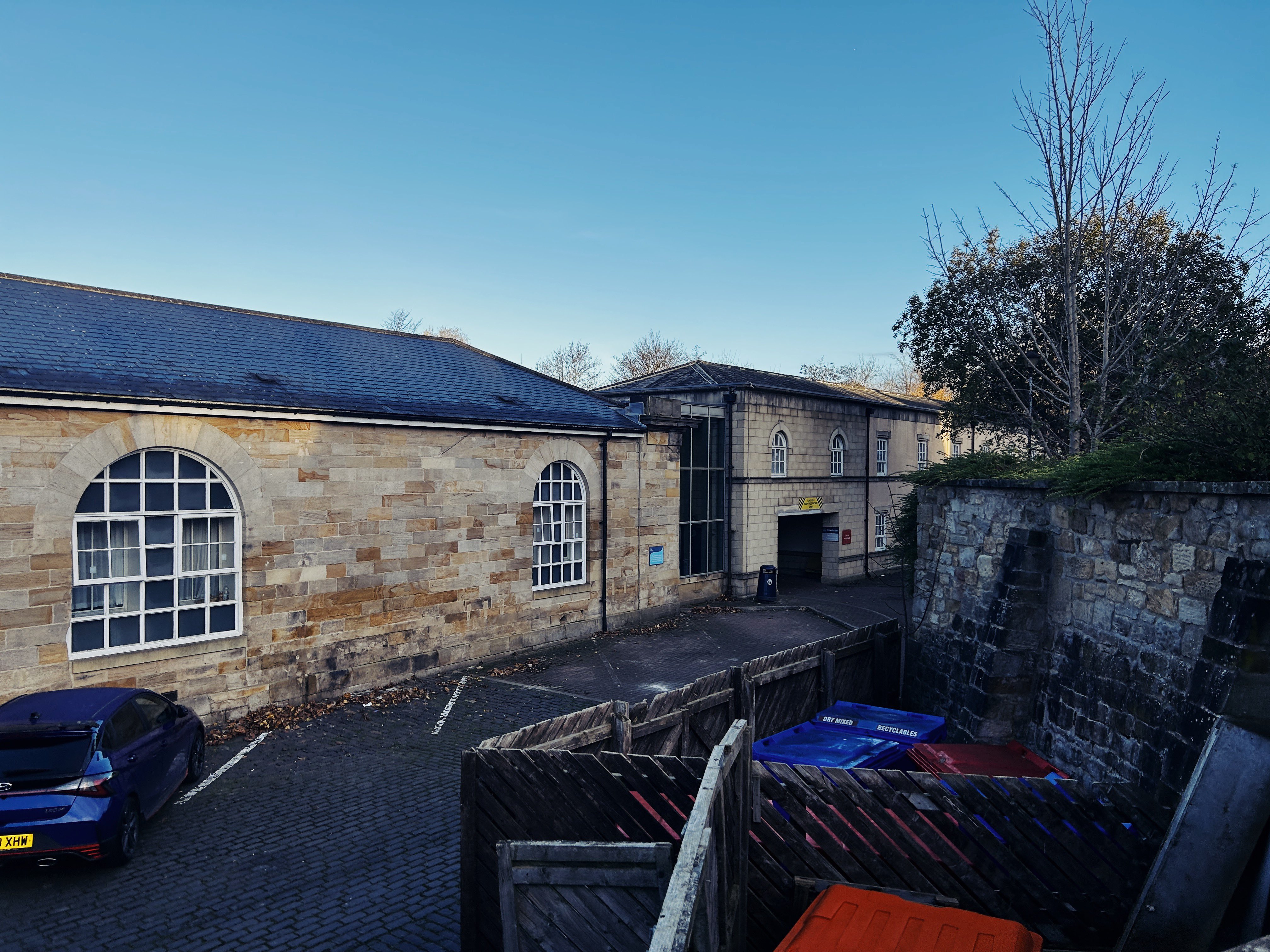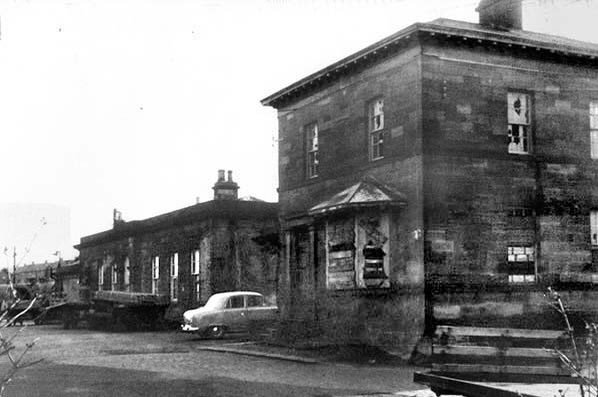
Gilesgate, Durham
Gilesgate Railway Station
Last Updated:
4 Jan 2024
Gilesgate, Durham
This is a
Railway Station
54.779279, -1.562606
Founded in
Current status is
Extant
Designer (if known):
George Townsend Andrews

Grade II listed
Many may know, but the current Durham station was not the only one in the city nor the first either. In fact, the accolade goes to this complex at Gilesgate.
The station opened in 1844 and served the Newcastle & Darlington Junction Railway - so in those days if you wanted to nip over to Tyneside you’d get on here, via Washington and Boldon on the Leamside Line. The N&DJ constructed the original "East Coast Main Line" leg between Washington and Northallerton. Though any sort of mainline did not exist in these days, it was the work of these companies that connected the dots. Lines such as this were absorbed into the York, Newcastle & Berwick Railway. The route was used from a London to Gateshead service as early as June 1844, before the official opening, when the directors left London Euston at 5:03 and reached Gateshead at 2:24pm.
It was designed by George Townsend Andrews as per the listing, who produced many a station for Sir George Hudson. Other notable projects include the first station at York, the stations on the Scarborough to York line and the Seamer to Hull Line and much of those on the North Yorkshire Moors Railway.
The first terminus for the town was over at Shincliffe in 1839, but given the distance it became impractical and a branch was constructed. With this said, even this station isn’t ideal. The nature of Durham’s landscape meant it was impossible to get close to the centre - Elvet or the current station were probably the closest.
The railway is referred to in a couple different ways in contemporary newspapers. the Railway Station at Gilesgate is one such in a piece from 1845, when coal was sold from the depot deriving from Grange Colliery. Durham Railway Station was also used, given it was the only one in the city. A reader of the Durham Chronicle notes this term in 1844.
A timetable is provided in the Durham County Advertiser of 10/10/1856. There were at least 6 daily departures north as well as a morning mail train, and 5 trains south as well as a market train and 2 mail trains. It is at this time we get a detailed view of the station on the Ordnance Survey plans. There were multiple warehouses and the coal/lime depot, alongside the passenger station itself. There were 3 waiting rooms, a booking office and a lamp & oil room. There was a single platform, with much of the complex reserved for freight.
The station closed to passengers in 1857 but most of the station still exists. The passenger and platform buildings still exist as this continued to be used as a goods station until the 1960s. From the late 1850s, the station was a pick up/drop off place for goods in the town. Lambton Wallsend Coals and Framwellgate Wallsend Coals were specifically sold from here (Wallsend being a wider reputable term for North East coals). By the 1960s, part of the site was a scrap yard owned by C H Newton. After the station closed, it was Archibald's Hardware Store, but has since been renovated into a Travelodge and restaurant.
Listing Description (if available)


Both Ordnance Survey maps above provide an insight into Gilesgate Station before and after use as a passenger station. That surveyed in 1857 is particularly useful given the resolution. We can see the actual plan of the station itself as well as the surroundings. The tracks led outside of the station building, with the entrance segregate on the west side. Much of Gilesgate was well built up by this point, and we can see how the station influenced the commercial portfolio of the area. Pubs lined the streets, with one capitalising on the opportunity calling itself the "Railway Tavern".
The 1890s saw greater density, with further terraces constructed on Leazes Lane and the beautiful Magdalene Street at Gilesgate. The City Mustard Mills was also established.

The Ordnance Survey of 1919 presents further residential expansion, though the lands north of the station were still rural. A Drill Hall was constructed at Gilesgate Bank, but much of the area remains similarly to decades prior. Much remains today also.

Gilesgate Station in 2023 - now a Travelodge and restaurant. The left shows the station building, while the right were where the platforms and tracks were situated.

The platform building and warehouses is to the left, while a hotel extension has been added to the rear of the site.

The exterior of Gilesgate in bad condition from 1966. The station closed a year later. Source: Roger Darsley, Disused Stations
